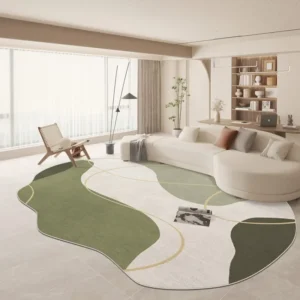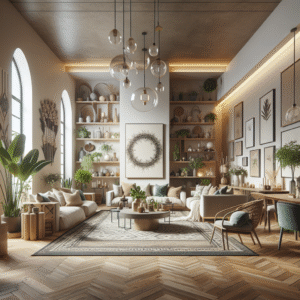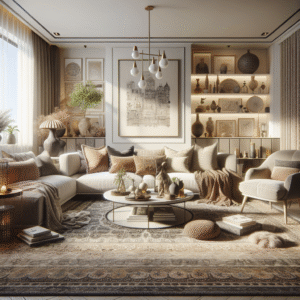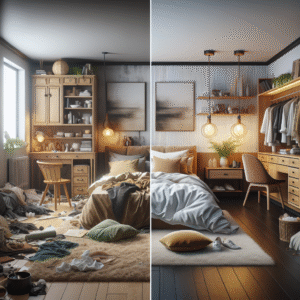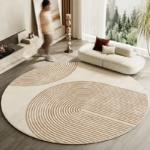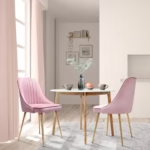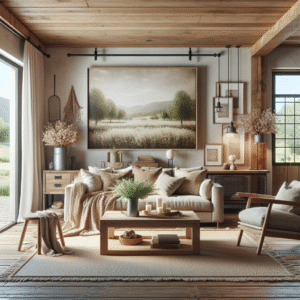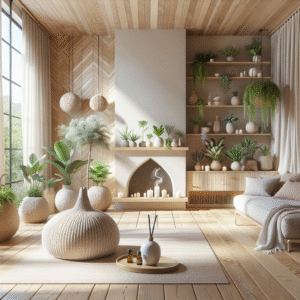Transform Your Space: Mastering Small Rug Tricks to Define and Elevate Compact Areas
Are you struggling with a compact area that feels more cramped than cozy? Many people face the challenge of making the most out of small spaces, leaving them feeling disconnected and uninspired. But what if I told you that the right small rug tricks could transform your space drastically? In this article, you’ll learn how to skillfully place small rugs to not only define your areas but also elevate their aesthetic appeal.
From creating visual boundaries to enhancing your décor, we’ll explore various strategies to effectively use small rugs in compact spaces. Plus, we’ll equip you with actionable insights and examples, ensuring you walk away ready to redefine your home. Let’s get started!
Why Rugs Matter in Small Spaces
Small rugs can serve multiple purposes, from defining zones to adding warmth. They can visually anchor a space, making it feel more inviting and cohesive. Here are a few reasons why rugs are essential:
- Enhance Comfort: Soft surfaces provide comfort underfoot.
- Visual Appeal: Beautiful designs can add character to otherwise dull spaces.
- Define Spaces: They can demarcate different functional areas in an open floor plan.
Selecting the Right Rug for Your Space
When choosing a small rug, consider the following:
- Size: Ensure the rug fits your space appropriately.
- Material: Choose durable materials that suit your lifestyle.
- Pattern: Select patterns that complement your existing décor.
Small Rug Placement Techniques
Placement is crucial when it comes to maximizing the impact of small rugs. Here are some effective strategies:
Creating Visual Zones
Use rugs to separate different functional areas, especially in open floor layouts:
- Living Area: Position your rug under the front legs of your couch to create an inviting sitting zone.
- Dining Area: Place a rug completely beneath the dining table to visually define the eating area.
Layering Rugs for Depth
Layering can add intriguing texture and depth:
Start with a larger neutral rug under a smaller patterned one. This combination can add complexity while still keeping the space feeling airy.
Color and Texture: Choosing the Right Aesthetics
The colors and textures of your rugs can significantly affect a room’s atmosphere. Here are some tips:
Color Psychology
Colors can evoke different emotions:
- Light Colors: Make a space feel larger and more open.
- Dark Colors: Provide warmth and coziness but can make a space feel smaller.
Texture Play
Using textures adds interest:
Mixing a plush rug with sleek furniture can create a dynamic look. Experiment with different materials like wool, cotton, or jute to see what works best for you.
Maintaining Your Small Rugs
To keep your small rugs looking their best, regular maintenance is crucial:
- Vacuum Regularly: Keep rugs free from dirt and dust.
- Spot Clean: Address spills immediately to prevent stains.
- Rotation: Rotate rugs every few months to ensure even wear.
Case Studies: Successful Small Rug Transformations
Let’s look at a couple of examples where rugs made all the difference:
Example 1: The Studio Apartment
A studio apartment owner utilized a vibrant, geometric rug to distinctly separate their living and sleeping areas. This not only defined spaces but also added visual interest, making the compact area feel more intentional and cohesive.
Example 2: The Tiny Office
In a tiny home office, a layered approach to rug placement helped distinguish the workspace from the rest of the living area, improving focus and aesthetics simultaneously.
Essential Tools and Resources
Here are a few resources to consider:
- Rug Source – for a wide variety of rugs.
- Houzz – for design inspiration.
Frequently Asked Questions
What size rug is best for a small living room?
The ideal rug size usually covers all legs of the main pieces of furniture or one half of the couch, creating a cohesive look.
Can I use a small rug in a large room?
Yes, small rugs can still be used in large spaces by creating defined areas or layering with larger rugs for depth.
How often should I clean my rugs?
Vacuum weekly, and deep clean according to the type of material; typically every 6-12 months.
Conclusion & Next Steps
In this guide, we explored how small rug tricks can significantly transform compact areas, enhancing both design and functionality. By choosing the right rug, placing it strategically, and maintaining it well, you can redefine your space beautifully. Now it’s your turn to apply these insights! Want to learn more about home décor? Check out our articles on wall art and lighting options to complete your transformation!
Content Disclaimer
Information provided is for educational purposes only. For specific advice tailored to your situation, please consult a professional.
Categories
- Accent Walls & Ceilings (14)
- Art Curation & Gallery (29)
- Bedding Style Trends (42)
- Bedroom Makeover (34)
- Bohemian & Eclectic Styles (14)
- DIY & Budget-Friendly Decor (13)
- Eco-Friendly Design (15)
- Furniture Care (33)
- Home Decor & Design Ideas (103)
- Home Wellness Spaces (14)
- Integrated Outdoor Living (13)
- Kids and Nursery Decor (14)
- Living Room Decor (34)
- Minimalist & Japandi Style (17)
- Mix & Match Techniques (33)
- Modern & Contemporary Design (13)
- Rug Sizing & Placement (33)
- Seasonal Home Decor (36)
- Small Space Solutions (18)
- Wall Art & Painting Tips (36)
Recent Posts
Recent Comments
Archives
Product Gallery
-
 Large Area Green Rugs for Bedroom Nordic Living Room Decoration Shaped Carpet Irregular Plush Lounge Rug Home Thick Washable Mat Rated 5.00 out of 5$57.07 – $359.83Price range: $57.07 through $359.83
Large Area Green Rugs for Bedroom Nordic Living Room Decoration Shaped Carpet Irregular Plush Lounge Rug Home Thick Washable Mat Rated 5.00 out of 5$57.07 – $359.83Price range: $57.07 through $359.83 -
 Nordic Style Rugs for Bedroom Morandi Living Room Decoration Carpet Large Area Geometry Lounge Rug Home Cloakroom Non-slip Mat Rated 5.00 out of 5$40.98 – $620.81Price range: $40.98 through $620.81
Nordic Style Rugs for Bedroom Morandi Living Room Decoration Carpet Large Area Geometry Lounge Rug Home Cloakroom Non-slip Mat Rated 5.00 out of 5$40.98 – $620.81Price range: $40.98 through $620.81 -
 Irregular Shapes Living Room Decoration Carpet Modern Style Rugs for Bedroom Home Thicken Plush Rug Fluffy Soft Lounge Floor Mat Rated 4.75 out of 5$58.00 – $360.83Price range: $58.00 through $360.83
Irregular Shapes Living Room Decoration Carpet Modern Style Rugs for Bedroom Home Thicken Plush Rug Fluffy Soft Lounge Floor Mat Rated 4.75 out of 5$58.00 – $360.83Price range: $58.00 through $360.83





